When it comes to wildlife, most of our attention and love is given to the fluffy mammals and, on occasion, the other vertebrates. If and when insects get a look-in, it’s usually the pollinators – and even then, it’s normally just the pretty butterflies and cute buzzing bees. Maybe, at a stretch, moths and dragonflies will get a mention, too. But there are so many other insects that are worth at least a moment of your time.
How many species of insects are there in the UK and Ireland?
Great Britain and Ireland is home to a remarkable 24,000-plus species of insects, with more joining the list on a regular basis, including previously undiscovered species that have been living here already, newly arrived ones from continental Europe undergoing natural range expansion, or accidentally introduced species.
A new species discovered in the UK
In 2019, a completely new insect order was added to the UK list – the first for 100 years. Entomologists at RHS Wisley in Surrey discovered webspinners, which belong to the Embioptera order, in a glass house. Native to Thailand, it’s thought they were imported via the plant trade, but they’re not deemed to be pests.
Even familiar groups of insects can prove to be surprising, be it the life cycle and adaptations of cuckoo bumblebees (look this up, you won’t regret it), or the colourful and recognisable ladybirds.
“It is incredible to think that there are so many aspects of ladybird ecology and behaviour that are yet to be unravelled,” says Professor Helen Roy from the Centre of Ecology and Hydrology, who set up the UK Ladybird Recording Scheme. “In recent years, a number of the tiny little ladybirds have been found in places they had never been seen before. People are making exciting discoveries on their doorsteps!”
Some groups of insects are widely loathed by many, such as wasps and flies, but they deserve some credit, too. “Flies do everything, get everywhere, and break every mould,” says Dr Erica McAlister, senior curator of Diptera and Siphonaptera at the Natural History Museum, London, and president of the Amateur Entomologists’ Society.
“They are understudied and neglected, and this is our loss,” she adds. “How can you not like creatures that provide you with flowers and chocolate (they are the dominant pollinators)? Surely that is a reason to let them into your hearts?”
Discovering the mesmerising world of insects is a gift that keeps on giving, as it leads to the realisation that pretty much all invertebrates have bizarre and fantastic adaptations to be appreciated and admired. So get out there and see what you can unearth in your garden, local park or nature reserve – you never know what fascinating creature you could stumble across next!
Here is our expert guide to insect species found in the UK, including how to identify and where to find each species.
Overlooked insect species found in the UK
Dark-edged bee-fly (Bombylius major)
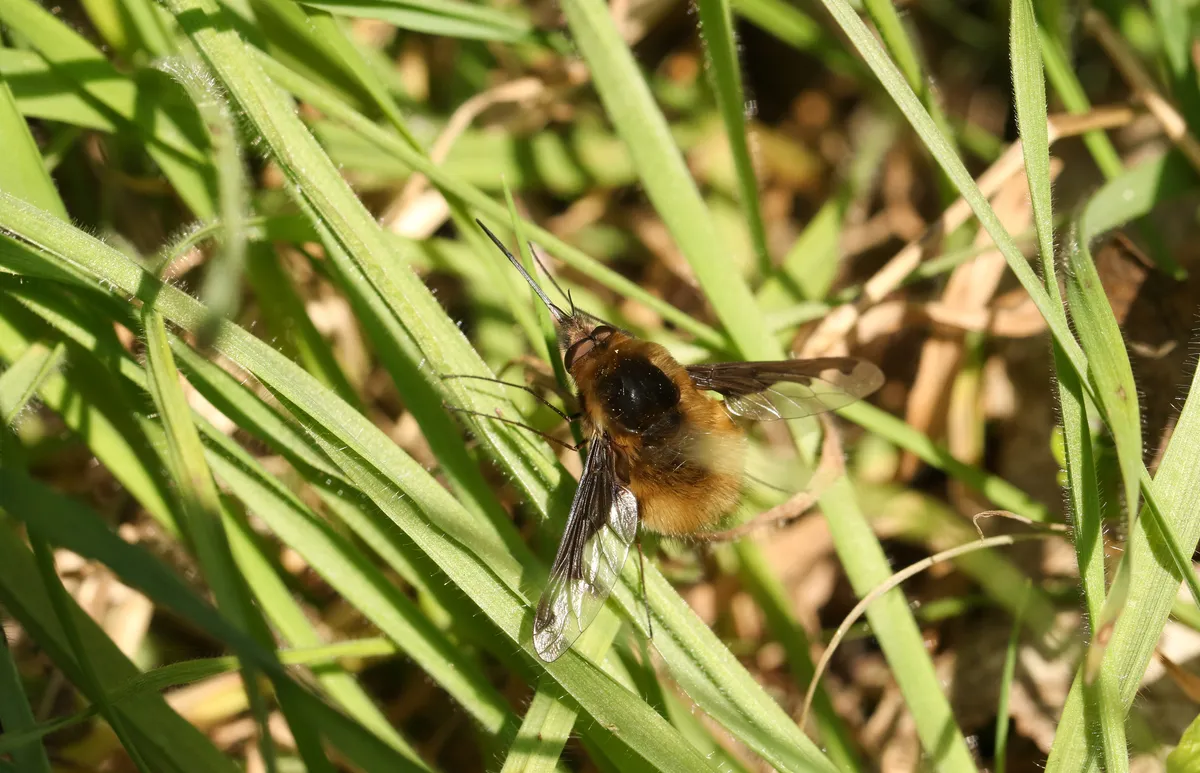
Feeding on nectar with their long, straight proboscis, dark-edged bee-flies must be able to lay claim to being the cutest flies with their fluffy bodies and twerking motions. The latter is their technique for flicking their dust-coated eggs into the nests of solitary mining bees. When the bee-fly larvae hatch, they crawl further into the nest to attack and drain the bodily fluids from the bee larvae.
Although this results in the death of the parasitised bee larvae, there is no evidence that bee-flies cause any decline in the solitary mining bee populations. The most common and widely distributed species in the UK is the dark-edged bee-fly, found across much of the country.
Bumblebee hoverfly (Volucella bombylans)
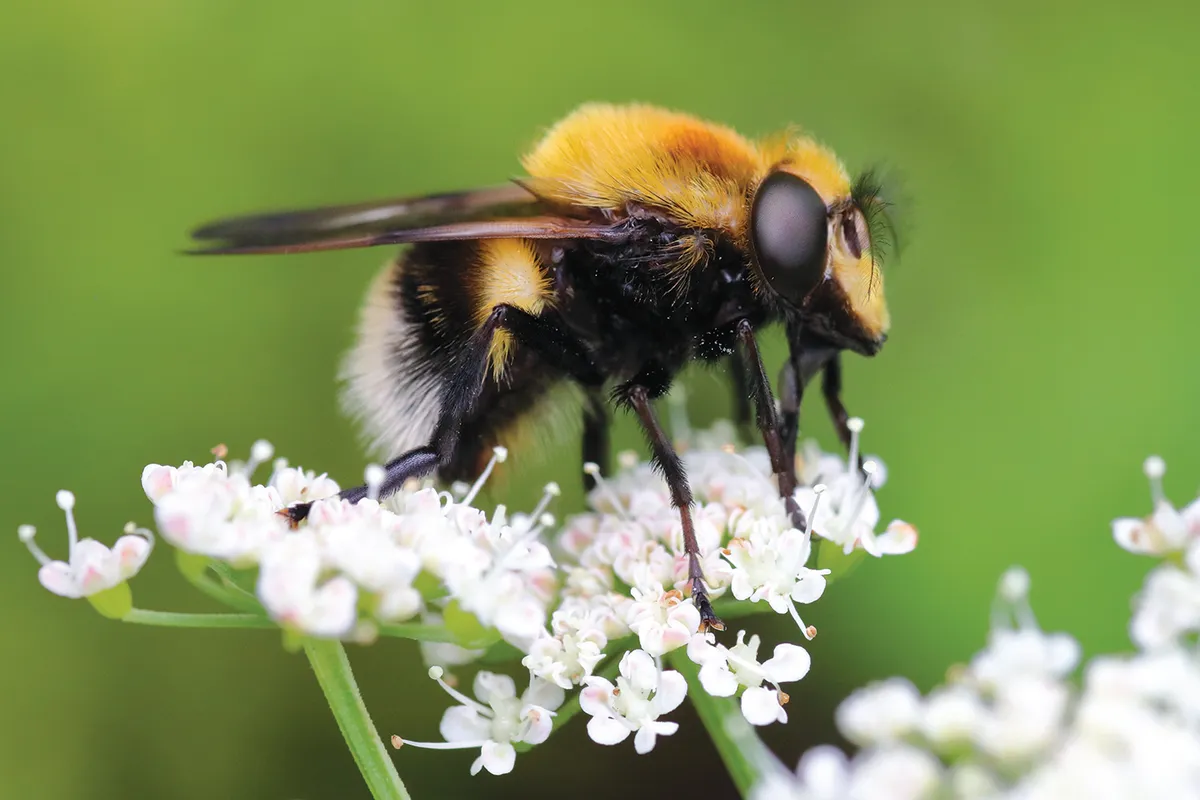
This fluffy hoverfly is a bumblebee mimic, the only one in the Volucella genus – the others all mimic wasps. It comes in a variety of colour combos; one is a yellow and black body with a white tail, replicating white-tailed bumblebees. This imitation allows the female hoverfly to sneak into the nest of a queen bumblebee to lay her eggs; the larvae then feed on the debris there.
Water scorpion (Nepa cinerea)
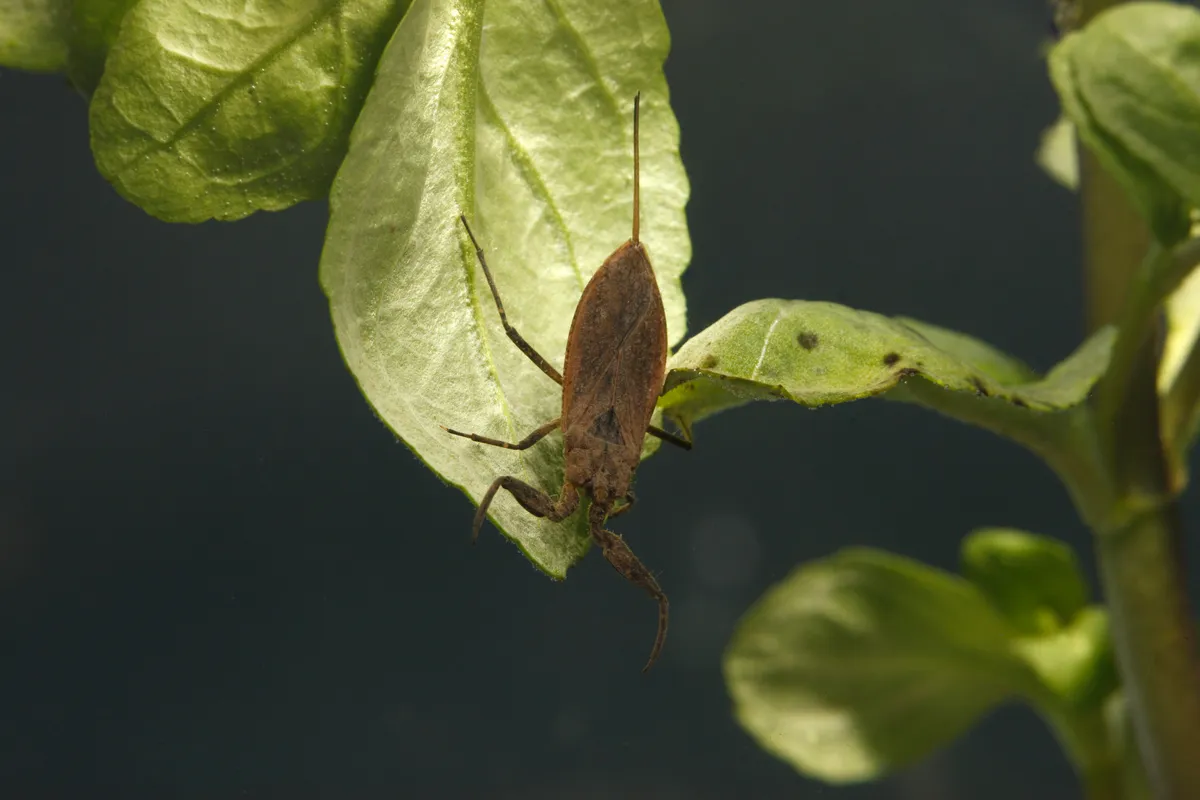
If you’re not a fan of arachnids, don’t let the name of this insect put you off as it’s not actually a type of scorpion – its ‘tail’ just makes it look like one! And it can’t even sting, as the tail is instead used like a snorkel in order to breathe when underwater. It’s a fierce predator though, hiding among vegetation and ambushing tadpoles and small fish with its pincer-like front legs.
Discover more pond wildlife to look out for.
Green tiger beetle (Cicindela campestris)
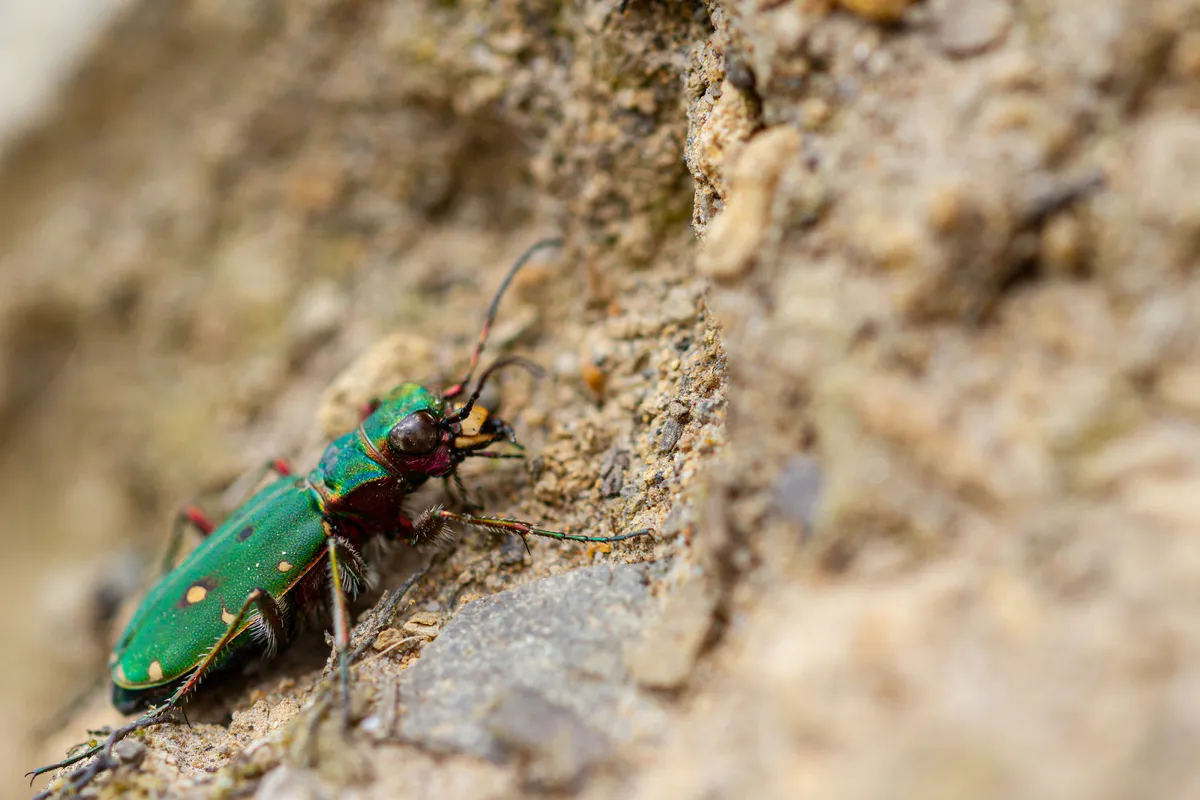
Four of the five tiger beetles found in the UK have very limited distribution, but the green tiger beetle is found across most of the country. It’s easily recognisable by its bright metallic-green colouration and large creamy spots.
However, it’s a fast mover and easily disturbed, hunting small invertebrates, such as spiders, ants and caterpillars. If you can get close to it while it’s still, take a close look at its impressive jaws (called mandibles).
Learn more about beetles in the UK.
Water stick insect (Ranatra linearis)
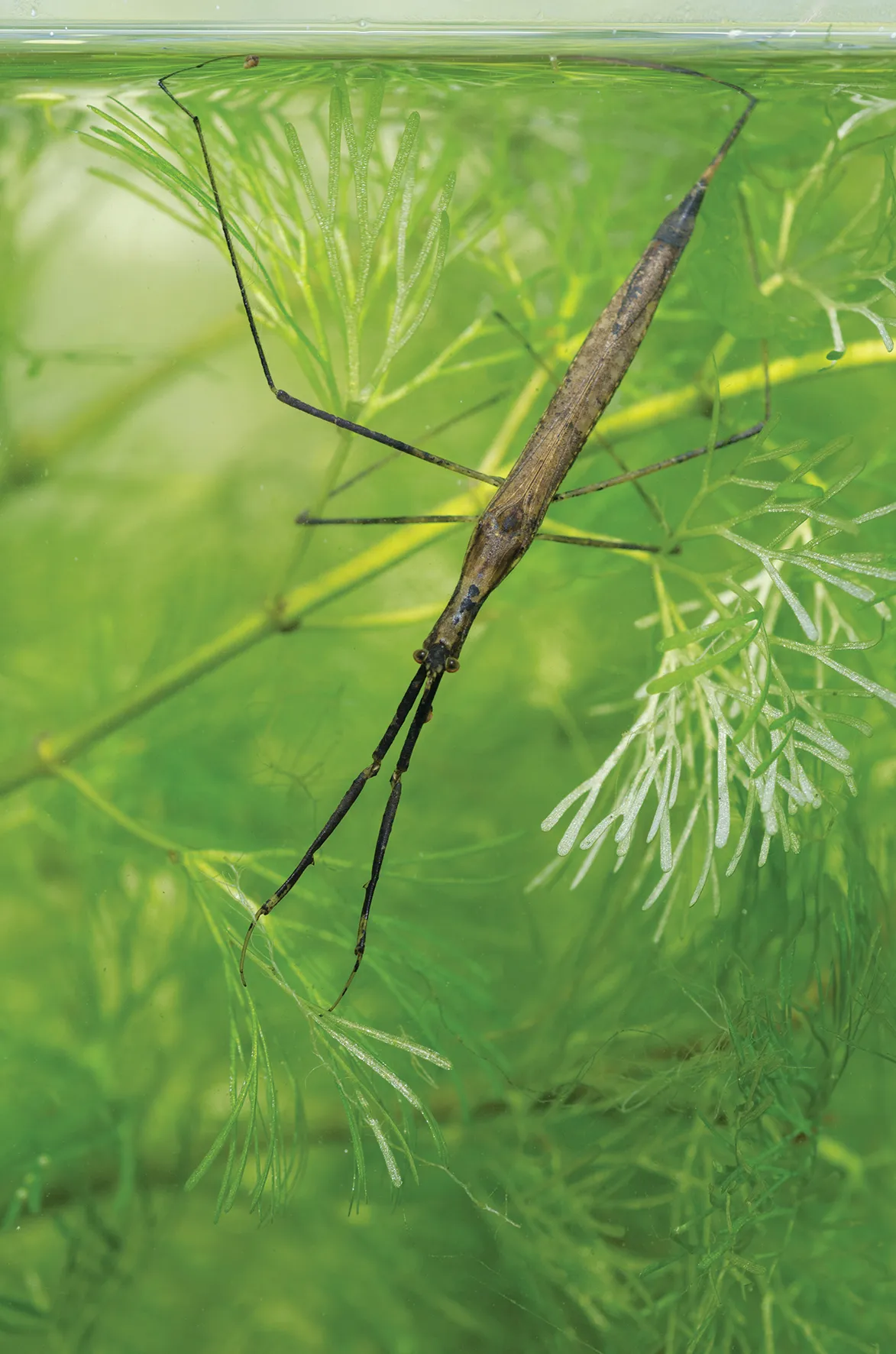
Although the UK isn’t home to any native species of stick insect, we do have a pretender: the water stick insect. This species looks a bit like a cross between a stick insect and a praying mantis and, like true stick insects, it feigns death and becomes motionless when handled.
Related to the water scorpion – both are members of the Nepidae family – it is also an ambush predator, catching insects, small fish, newts, tadpoles and even other water stick insects.
Discover more pond wildlife to look out for.
European bee-wolf (Philanthus triangulum)
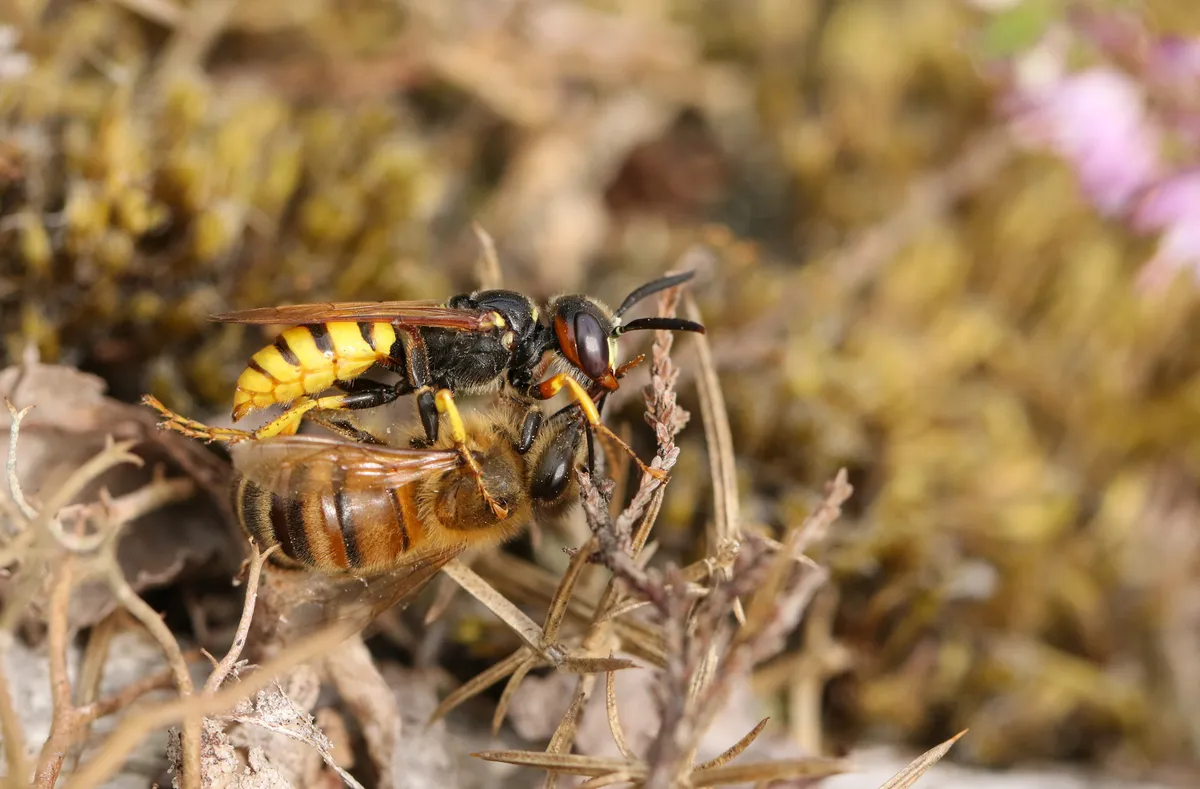
If you love honeybees, you may not be a fan of the bee-wolf, a species of digger wasp that specialises in predating honeybee workers. One of our largest solitary wasps, it can grow up to 17mm in length. The males form a lek (assembly area) to attract and mate with females, who go on to dig nests up to a metre long in sandy habitats. The female then hunts honeybees, paralysing them and taking them to her nest. Up to six bees are sealed in a chamber with an egg; once hatched, the larva feeds on the bees.
Southern wood ant (Formica rufa)
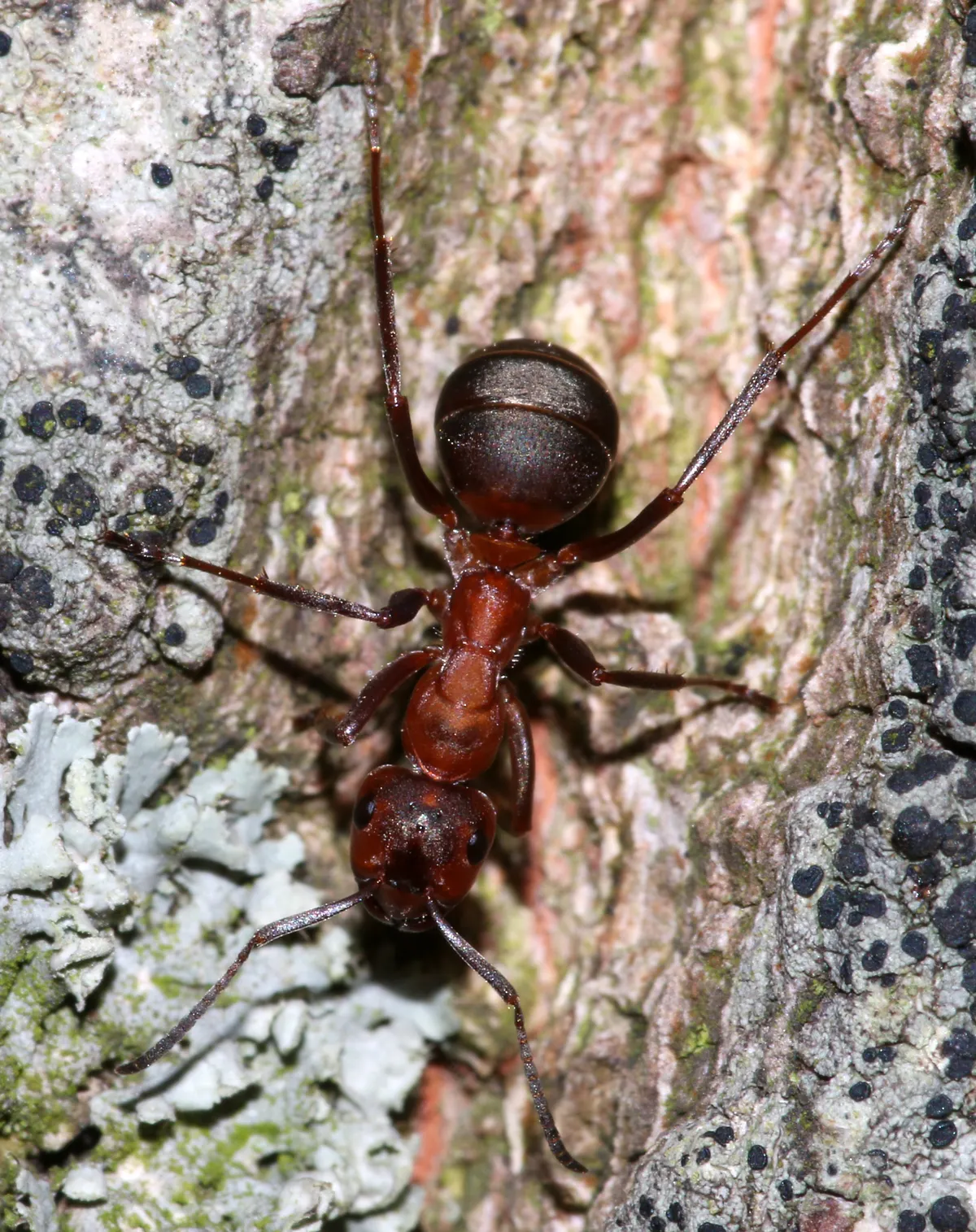
Also known as the red wood ant or horse ant, this is one of four wood ant species found in the UK. Workers can reach lengths of up to 10mm, and the queens can grow to 12mm. A colony builds a large nest mound from scraps of vegetation, and can consist of up to 400,000 individuals. Like many ant species, they are able to spray formic acid – colourless but quite pungent – to defend themselves and the colony. Widespread across England and Wales, southern wood ant nests are typically found in woodlands, but sometimes in scrubby heaths.
Ruby-tailed wasp (Chrysis ignita)
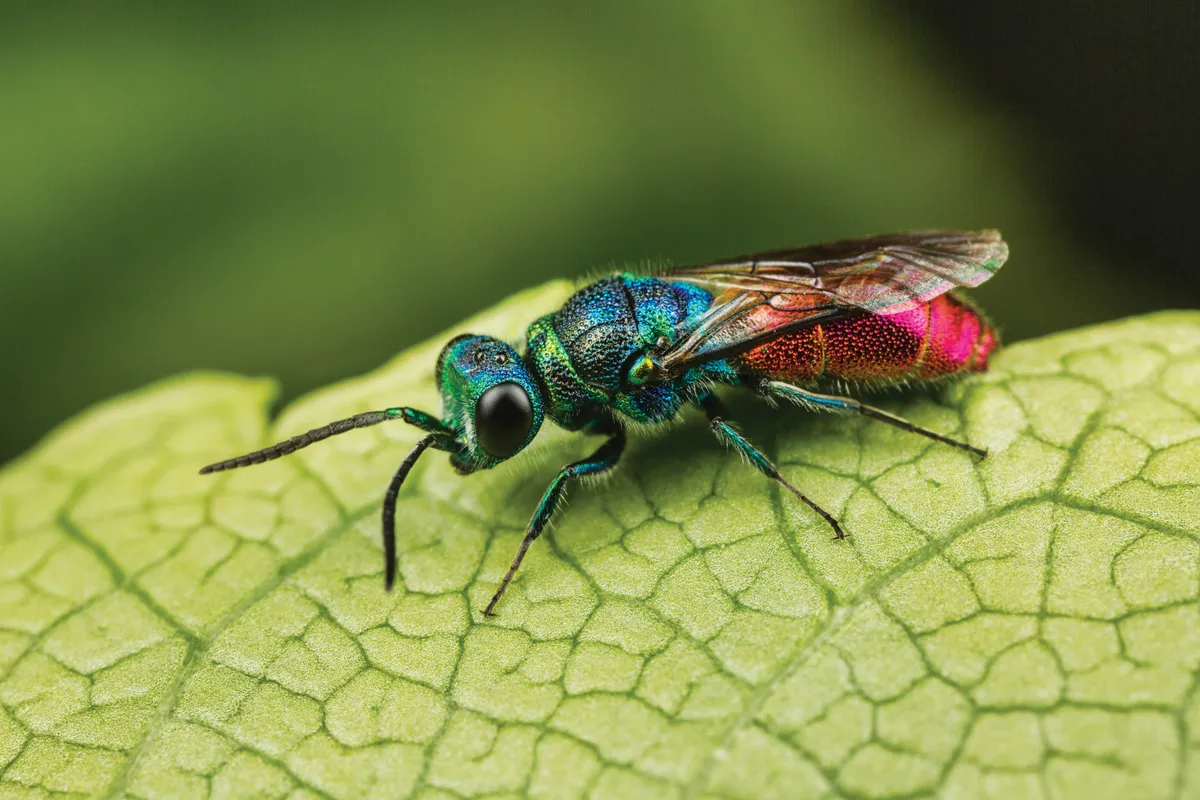
There are over 30 species of cuckoo wasp, with gorgeous metallic bodies in blue, green, purple and red. Many of them look extremely similar and they’re often grouped together as the Chrysis ignita group. As the family name suggests, ruby-tailed wasps are parasitic; the female enters a host’s nest – usually that of a red mason bee – and lays her eggs there. Her larvae then feed on the mason-bee eggs or larvae.
Rose chafer beetle (Cetonia aurata)
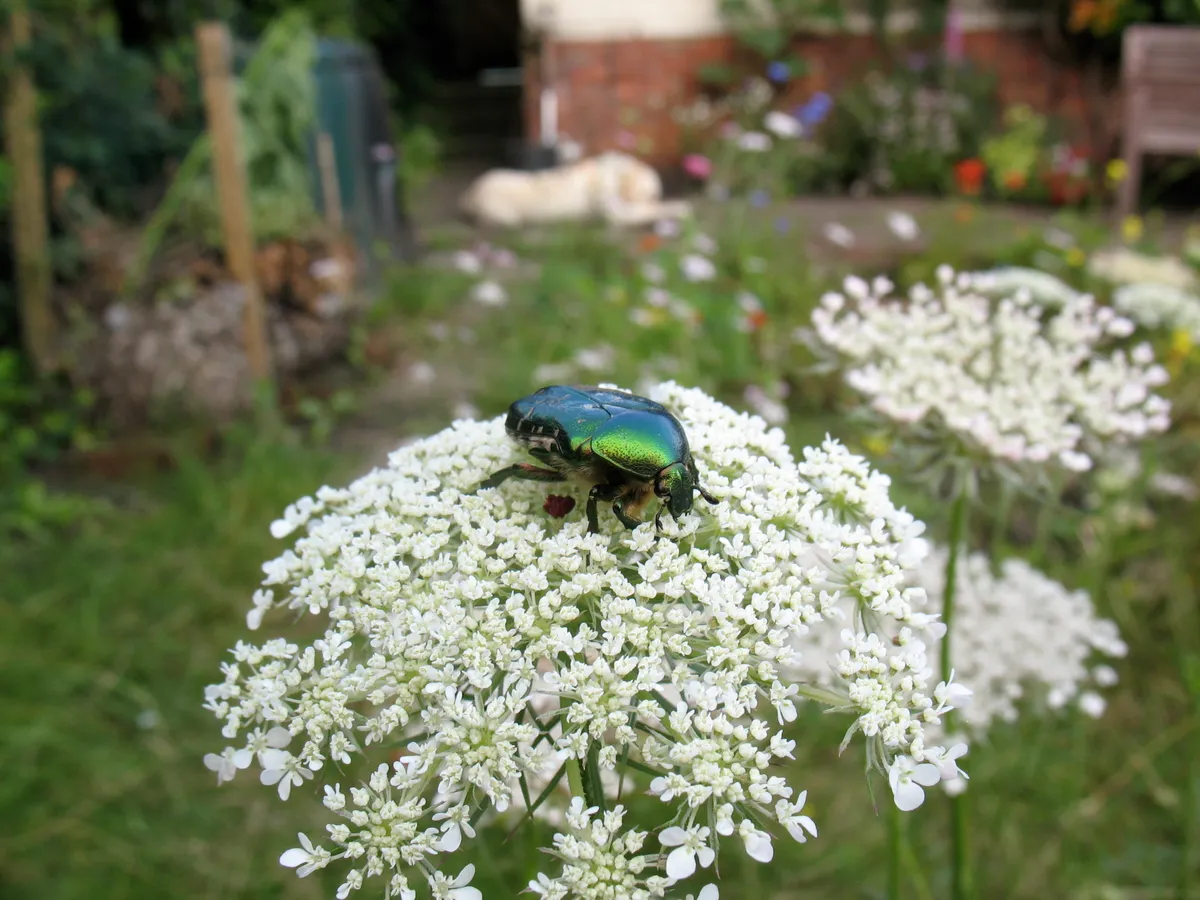
The loud buzz of a large flying rose chafer beetle as it zooms past can come as a shock if you’re caught unawares, but this species is an absolute stunner if you manage to get a look close-up. Usually a shiny metallic green in colour, the adults feed on flowers, nectar and pollen from a variety of plants, including roses, thus they are considered a pest by some.
However, the larvae are detrivores and feed on decaying vegetation, playing an important role in recycling nutrients. The larvae can live in the soil for several years before pupating.
Learn more about beetles in the UK.
Scaly cricket (Pseudomogoplistes vicentae)
A small and unassuming cricket, named after the tiny scales on its body, this species could be mistaken for a cockroach or earwig. There’s only one species of scaly cricket in the UK, and it may well be one of our most endangered insects. Until 1997, the only known site was Chesil Beach in Dorset, but it has since been found in Devon and Pembrokeshire. However, there is a worry that recent winter storms will have wiped out some scaly cricket colonies.
Gall wasp (Diplolepis rosae)
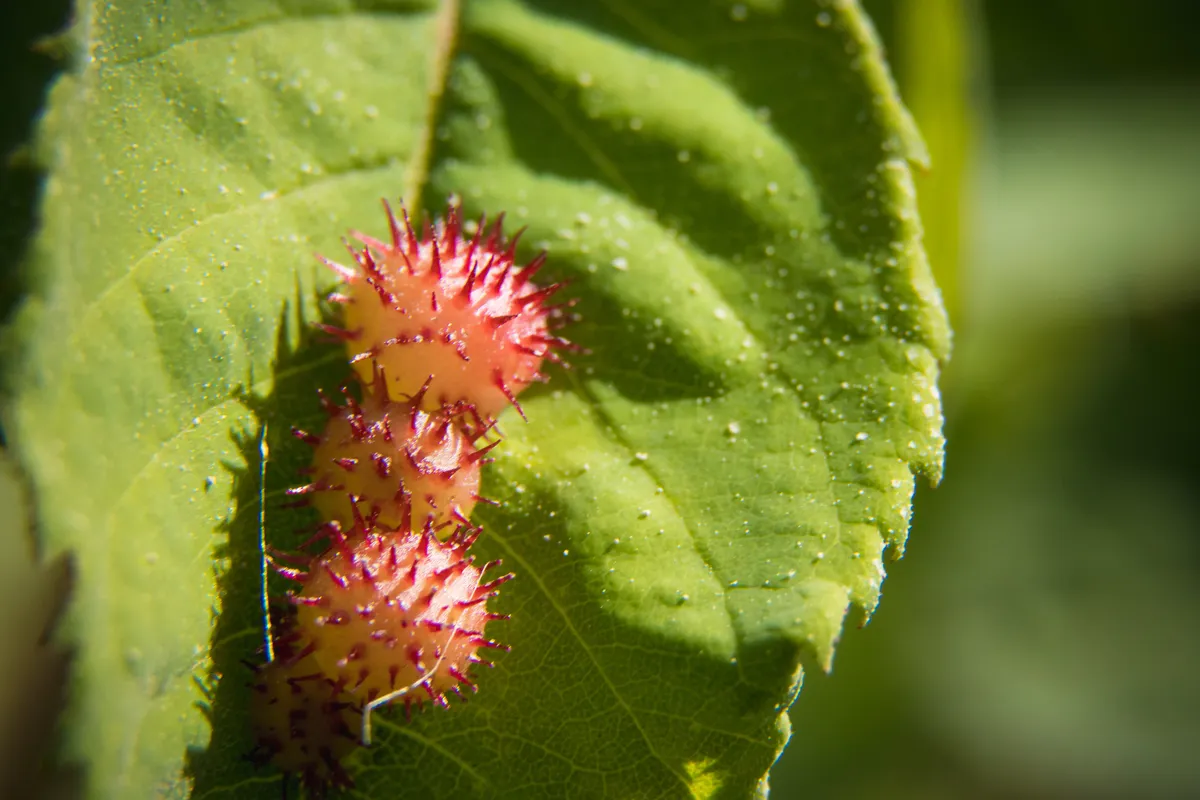
Ever spotted a hairy, round reddish-pink ball on a wild rose and wondered what caused it? It’s actually the work of a teeny tiny wasp, and the ball is a gall, often called a robin’s pincushion or rose bedegaur. The wasp lays eggs within a leaf bud, secreting chemicals that cause abnormal growth on the rose. The resulting gall consists of a number of chambers, each housing an overwintering larvae; the wasps then emerge in spring. Although it looks odd, the gall is actually harmless to the plant.
Minotaur beetle (Typhaeus typhoeus)
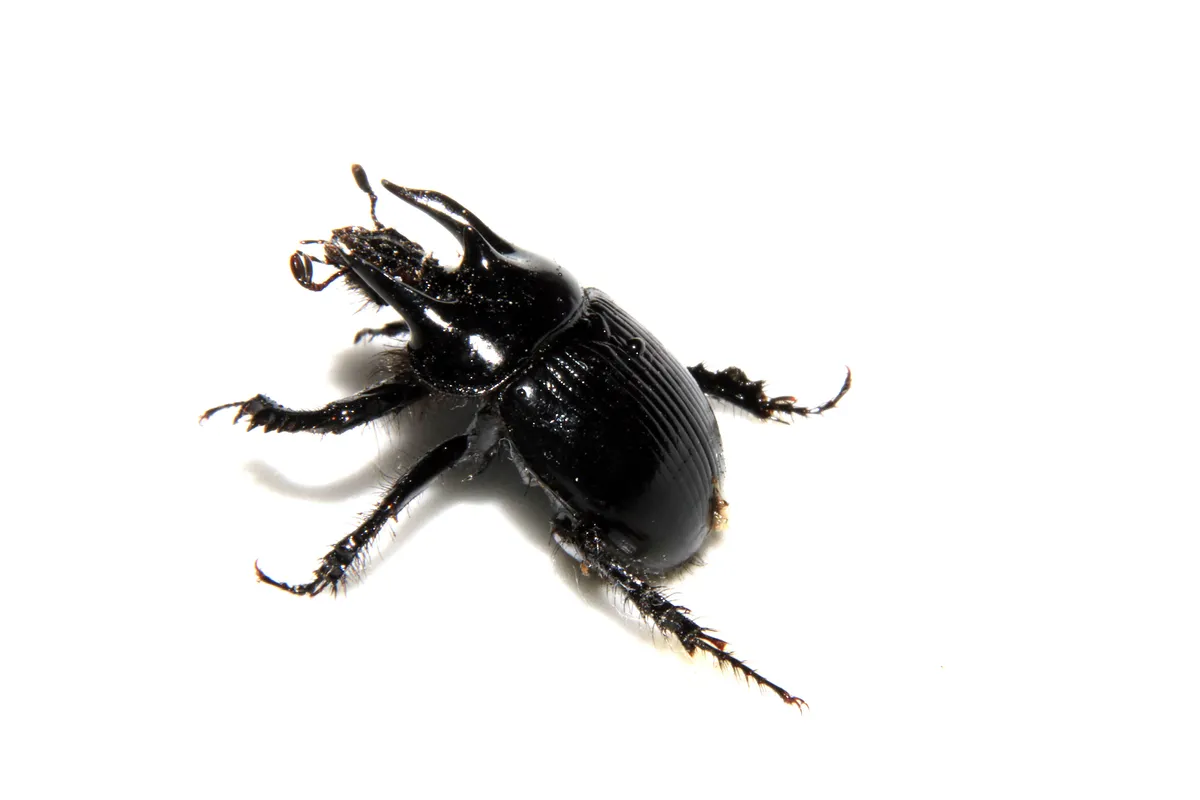
One of the species in the dor beetle family, minotaur beetles are particularly impressive for the astonishing three horns proudly displayed on the thorax of the males. They use these to fight each other in order to gain dominance and mate with females.
As a type of dung beetle, they are usually seen around rabbit middens and sheep droppings. They nest in deep tunnels and drag dung back for their larvae. Minotaur beetles are found across much of England and Wales, becoming scarcer further north; they are very rarely found in Scotland.
Learn more about beetles in the UK.
Hornet robberfly (Asilus crabroniformis)
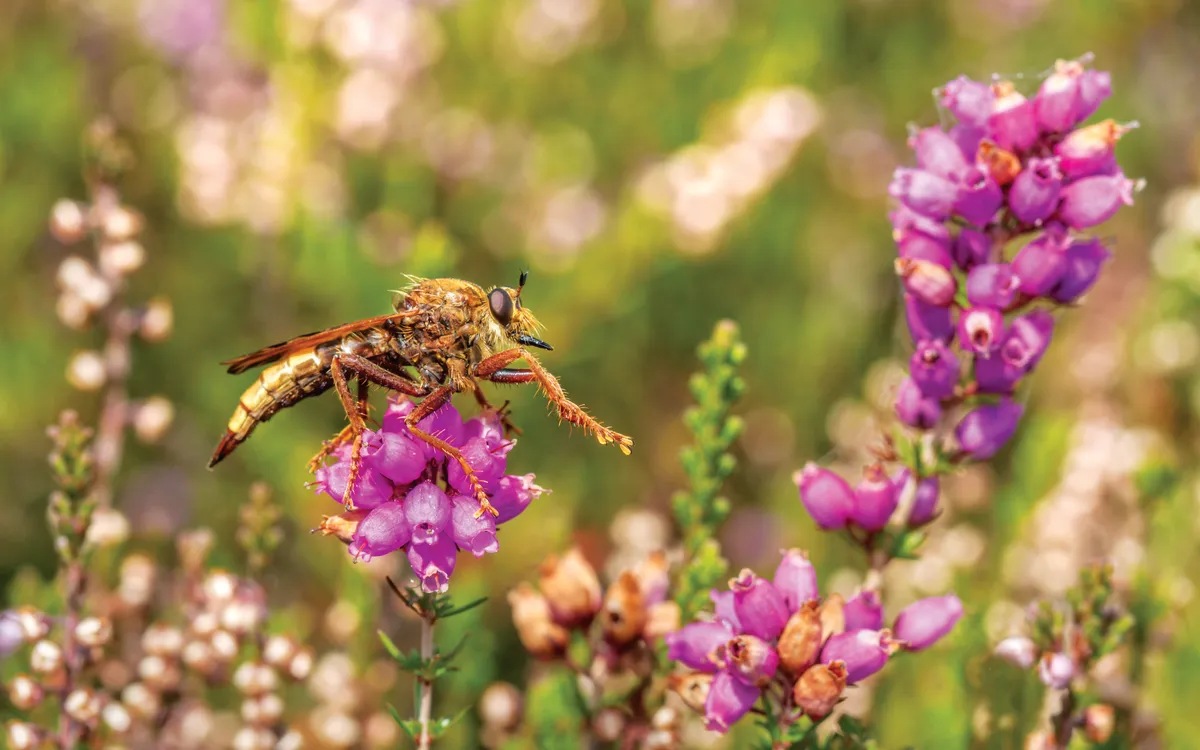
The hornet robberfly is the UK’s largest species of fly, and despite mimicking hornets, it is actually harmless to humans. However, it’s a venomous predator of other insects with the ability to catch, sedate and suck out the fluids of its prey while on the wing. Females lay eggs in cattle dung, and it’s believed the larvae predate on dung-beetle grubs. As such, they are vulnerable to changes in farming practices and the use of insecticides.
Common burying beetle (Nicrophorus vespilloides)
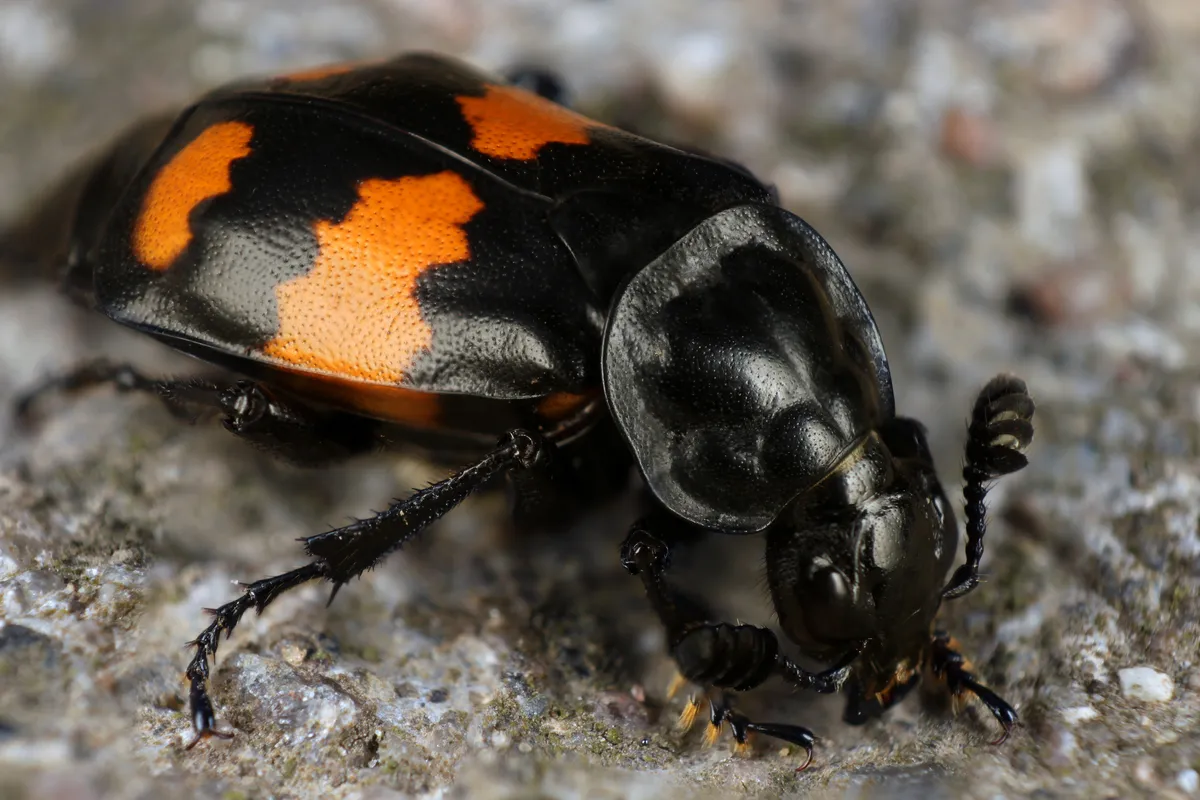
One of the most easily identifiable groups of beetles, burying beetles – also known as carrion beetles or sexton beetles – are drawn to the decaying bodies of birds, mammals and reptiles by smell. Once at the corpse, they mate and work together to defend it from other interested parties and excavate the soil around the body, eventually interring it.
The female lays her eggs in the carcass and, once hatched, the larvae go through three instar (growth) stages. For the first and second instars, they are reliant on pre-digested rotten food regurgitated by the parents; in the third instar, the larvae feed directly from the carcass. These beetles can occasionally be found in moth traps, too.
Timberman beetle (Acanthocinus aedilis)
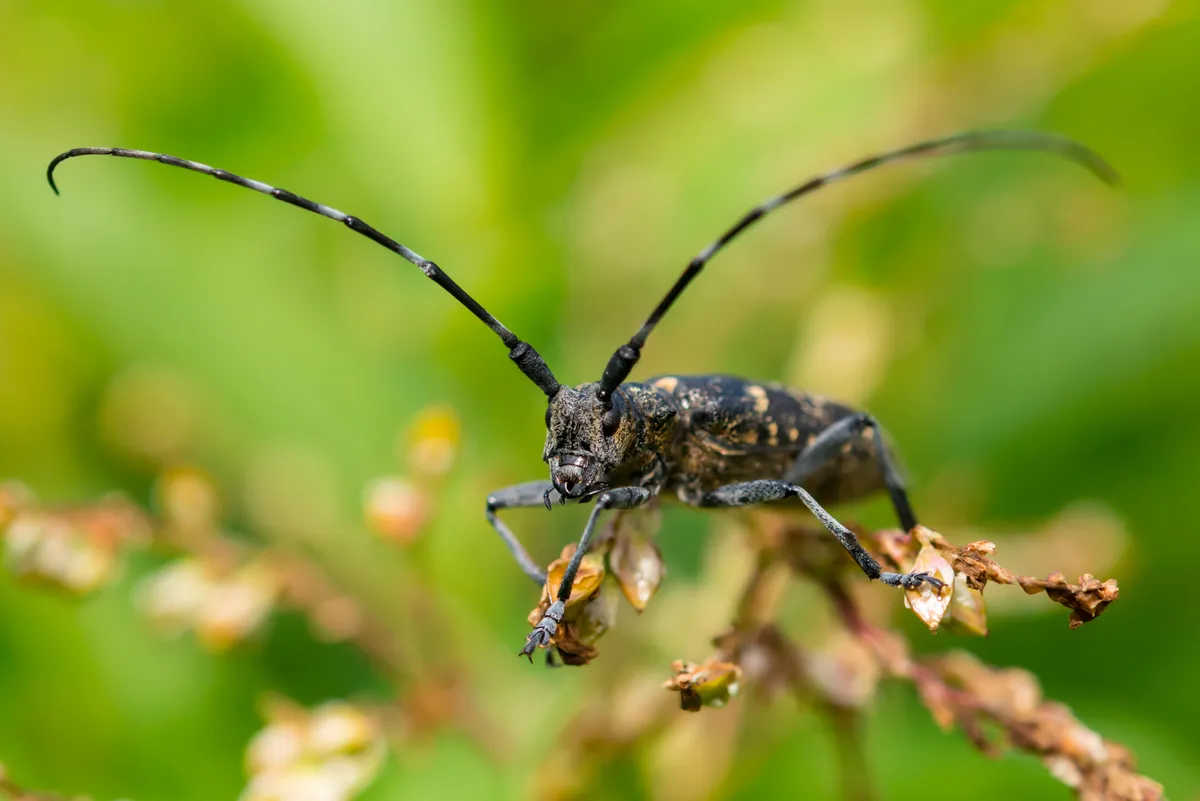
Although not the prettiest or most colourful of our longhorn beetles (for which the titles should probably be awarded collectively to the rufous-shouldered, two-banded, violet and wasp longhorn beetle species), the timberman beetle has certainly got the most impressive ‘long horns’, or antennae. On the males, these can measure four and a half times the length of their body. It’s a rare species, restricted to Scots pine forests in the Highlands of Scotland.
Semaphore fly (Poecilobothrus nobilitatus)
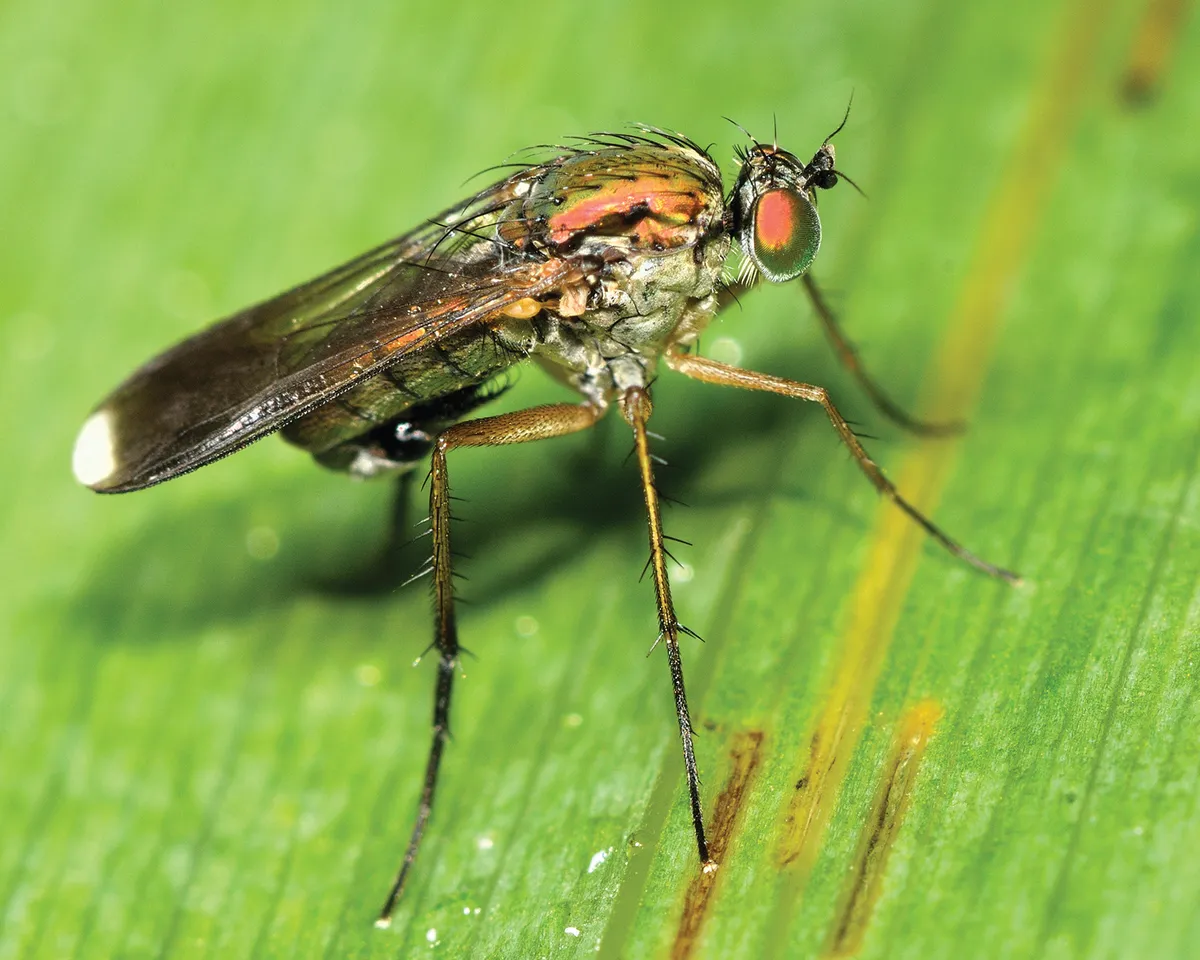
Although widely distributed across England and Wales, this species wasn’t bestowed its common English name of semaphore fly until 2012 when The Guardian ran a ‘name the species’ competition. The males have white tips to their wings, which they vibrate to attract females. After the buzzing of wings, the males perform a complex acrobatic display in flight which includes the fastest-known turn of any animal.
Silverfish (Lepisma saccharina)
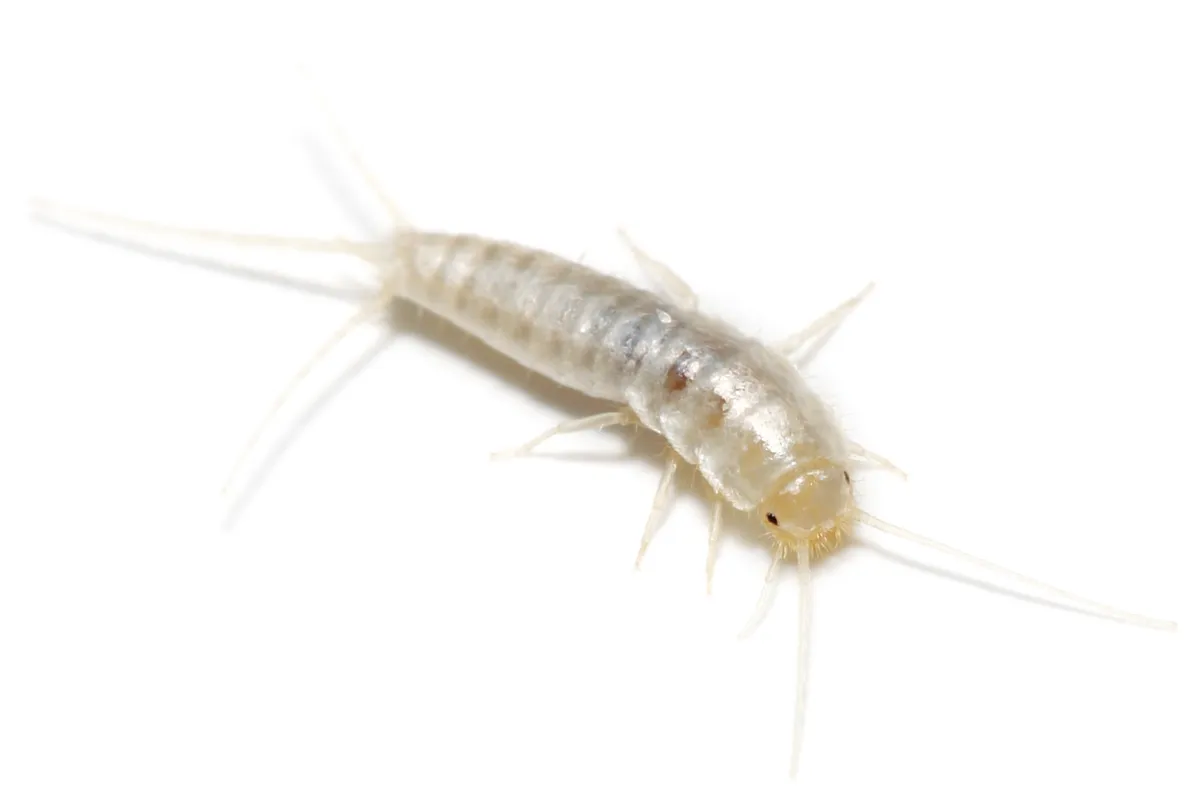
Deemed a pest by most when found in their homes, silverfish should perhaps be applauded for their ability to adapt to humans taking over the world – after all, so many species of wildlife haven’t. These slim insects are covered with shining scales, and belong to a primitive insect order called Zygentoma. They’re mostly harmless scavengers, but in large numbers they can damage wallpaper and other materials.
Heath potter wasp (Eumenes coarctatus)
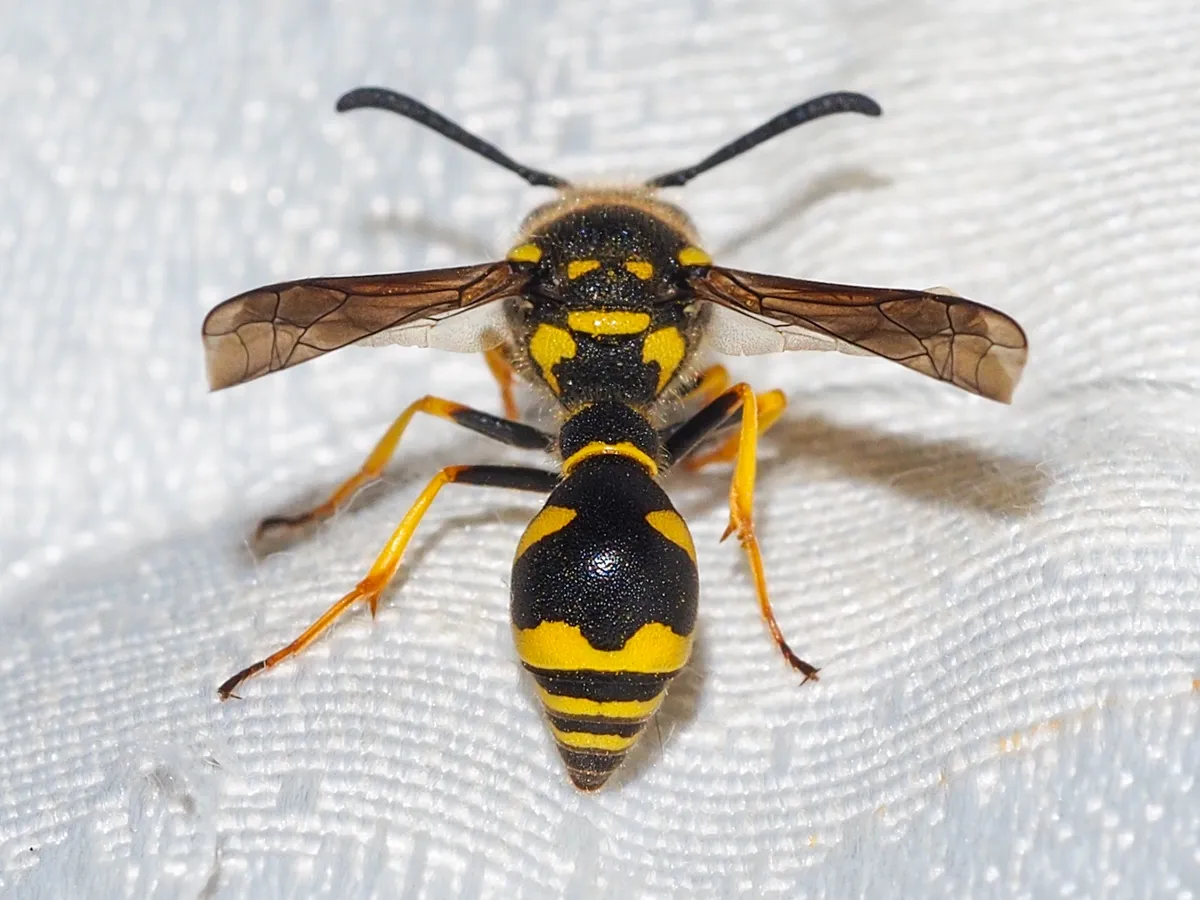
Our only species of potter wasp is restricted to heathlands in southern England. After mating, the female builds clay pots attached to heather. It can take her two to three hours to create a nest pot, using water and 22 to 28 balls of clay. She then lays a single egg in the pot, and goes on the hunt for moth caterpillars to feed the larva. Up to 38 caterpillars can be stuffed into a pot, which is then sealed and construction on the next pot begins.
For more on insect identification here is our list of the best insect identification guides.
